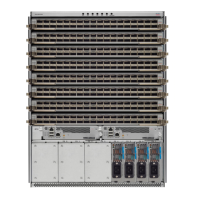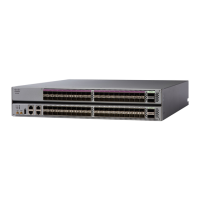Figure 8: Installing a Bale Clasp SFP Module into a Port
When installing an SFP or SFP+ module, you should hear a click as the triangular pin on the bottom of the SFP
module snaps into the hole in the receptacle. This click indicates that the module is correctly seated and secured
in the receptacle. Verify that the SFP modules are completely seated and secured in their assigned receptacles
on the line card by firmly pushing on each SFP module.
Note
Remove a Bale Clasp SFP or SFP+ Module
To remove this type of SFP or SFP+ module, follow these steps:
Step 1 Attach an ESD-preventive wrist or ankle strap and follow its instructions for use.
Step 2 Disconnect and remove all interface cables from the ports; note the current connections of the cables to the ports on the
line card.
Step 3 Open the bale clasp on the SFP module with your index finger, as shown in the figure below. If the bale clasp is obstructed
and you cannot use your index finger to open it, use a small flat-blade screwdriver or other long, narrow instrument to
open the bale clasp.
Step 4 Grasp the SFP module between your thumb and index finger and carefully remove it from the port, as shown in the figure
below.
This action must be performed during your first instance. After all the ports are populated, this may not be
possible.
Note
Connect Router to the Network
12
Connect Router to the Network
Remove a Bale Clasp SFP or SFP+ Module

